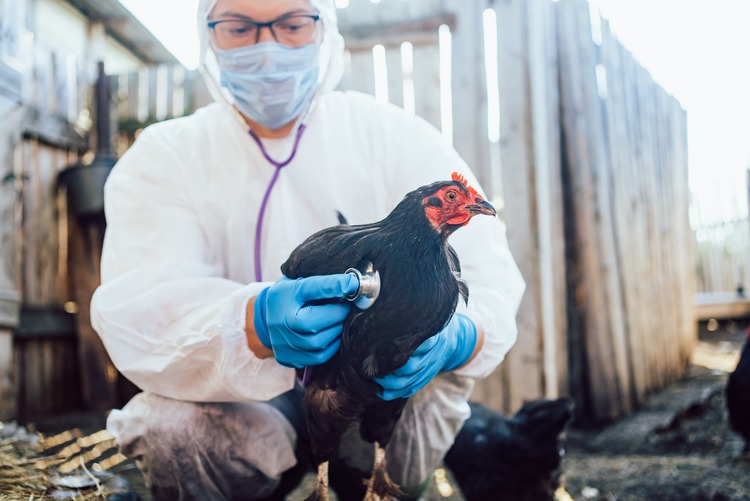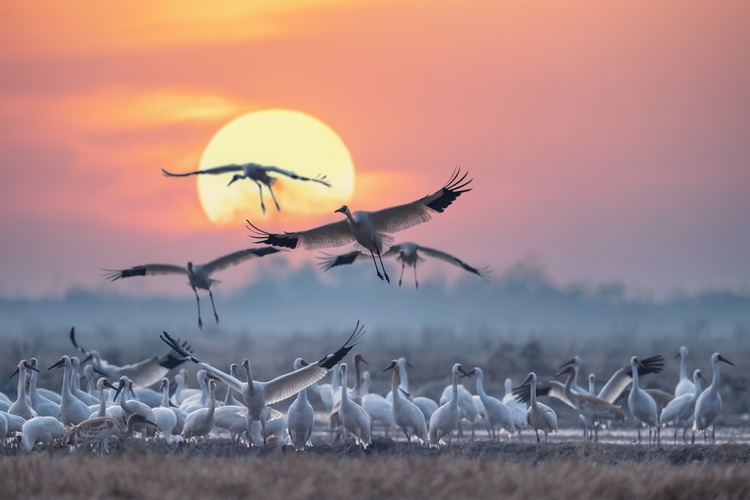
From rising temperatures to changing migratory patterns for birds, climate change may be creating conditions that help spread bird flu
By
Over the last four years, scientists have been monitoring the spread of a new variant of the H5N1 virus – otherwise known as avian influenza. The disease can circulate among bird populations, as well as a broad range of mammalian species – from polar bears to alpacas – but as of yet human-to-human transmission is not possible: it is only able to be spread to humans via infected animals.
If infection occurs, symptoms range from pink eye, fever, and shortness of breath to severe cases that can cause encephalitis (inflammation of the brain), pneumonia, and even death.
Check out our related reads:
Since 2024, there have been 66 confirmed human cases of H5N1 bird flu in the US as another multi-state outbreak occurs. While spread of the disease is attributed to close contact with infected birds or animals, or exposure to their environments, there is growing evidence to suggest another, more insidious factor accelerating its spread: climate change.
Migration patterns
One of the main ways in which H5N1 bird flu spreads is through migratory birds, which are able to introduce the disease into new areas. In 2022, for example, the first recorded case of a polar bear dying from bird flu was reported – thousands of miles away from where the first genotype of the virus was discovered in Southern China back in 1996.
Yet, as the planet undergoes climate change, the patterns that such birds take are disrupted due to fluctuating temperatures, rising sea levels and a shortage of food, forcing them to head in directions and territories not previously explored and consequently interacting with other animals in new ways with potential risks of further spread.
In particular, warmer temperatures may also mean some bird species’ migratory patterns have shifted earlier, allowing them to spend more time on their breeding grounds.

‘From the avian flu perspective, that is important because breeding grounds can be places of high transmission,’ said professor at University of Georgia Dr Claire Teitelbaum.
Along with rising temperatures, other atypical climate events can also lead to changes in migratory patterns in birds infected with H5N1.
Back in 2021, birds carrying avian flu were able to fly from northern Europe to Iceland, and then to Newfoundland. Travelling such an unprecedented distance was ‘highly unusual’ according to professor of veterinary medicine at the University of Montreal, Jean-Pierre Vaillancourt, but one of the reasons explaining their mighty flight was due to abnormal climate conditions causing unusually strong winds. Again, such a shift could lead to new interactions between animals and propagate the wider spread of H5N1 geographically.
Ultimately, as associate professor at Johns Hopkins Bloomberg School of Public Health Alexandra Phelan explains: ‘When you change a global system like climate so profoundly, small shifts can have seismic impacts, sometimes in unexpected ways.’
Working in extreme heat
The stifling, humid conditions that climate change can bring also complicates the effectiveness of personal protective equipment for those working in high-risk environments, again helping the virus to spread.
Back in July 2024, this was thought to be a crucial factor in the outbreak of bird flu in Colorado workers culling infected poultry. Temperatures soared to 40C outside chicken houses, but were much hotter indoors. Such sweltering conditions meant workers struggled to keep goggles, masks and other PPE secure as they sweated in the heat.
As well as this, industrial fans in the chicken houses were used as a means to cool down the surroundings but had the inadvertent effect of spreading feathers and debris from infected poultry, which can be vectors of the virus and allow it to infect others more easily.
If global temperatures continue to rise, the challenges faced by workers in high-risk bird flu environments are likely to intensify.
Seasonal variations
Increasingly, climate change is responsible for seasonal variations across the world. Particularly in North America – where the latest H5N1 outbreak has occurred – warmer winters and earlier springs allow pathogens reliant on moisture to spread, and cooler and wetter temperatures mean flu viruses like H5N1 can survive for longer in bird droppings and water.
These favourable conditions, laid against the backdrop of fluctuating migratory patterns of birds – or the rising temperatures making it increasingly difficult for workers to protect themselves – form a potent combination that may begin to explain the role of climate change in spreading H5N1.



